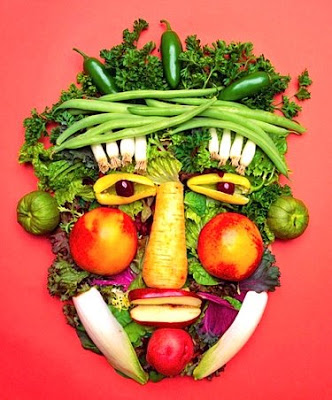
The organic monopoly and the myth of ‘natural’ foods:
How industry giants are undermining the organic movement
On non-meat products, the term natural is typically pure propaganda. Companies (like Whole Foods Market or UNFI) are simply telling us what we want to hear, so that we pay an organic or premium price for a conventional product.
By Ronnie Cummins / July 9, 2009
The organic alternative: A matter of survival
After four decades of hard work, the organic community has built up a $25 billion “certified organic” food, farming, and green products sector. This consumer-driven movement, under steady attack by the biotech and Big Food lobby, with little or no help from government, has managed to create a healthy and sustainable alternative to America’s disastrous, chemical and energy-intensive system of industrial agriculture.
Conscious of the health hazards of Big Food Inc., and the mortal threat of climate change and Peak Oil, a critical mass of organic consumers are now demanding food and other products that are certified organic, as well as locally or regionally produced, minimally processed, and packaged.
The Organic Alternative, in turn, is bolstered by an additional $50 billion in annual spending by consumers on products marketed as “natural,” or “sustainable.” This rapidly expanding organic/green products sector — organic (4% of total retail sales) and natural (8%) — now constitutes more than 12% of total retail grocery sales, with an annual growth rate of 10-15%. Even taking into account what appears to be a permanent economic recession and a lower rate of growth than that seen over the past 20 years, the organic and natural market will likely constitute 31-56% of grocery sales in 2020.
If the Organic Alternative continues to grow, and if consumers demand that all so-called “natural” products move in a genuine, third party-certified “transition to organic” direction, the U.S. will be well on its way to solving three of the nation’s most pressing problems: climate change, deteriorating public health, and Peak Oil.
Sales statistics and polls underline the positive fact that a vast army of organic consumers, more than 75 million Americans, despite an economic recession, are willing to pay a premium price for organic and green products. These consumers are willing to pay a premium because they firmly believe that organic and natural products are healthier, climate stabilizing, environmentally sustainable, humane for animals, and well as more equitable for family farmers, farmworkers, and workers throughout the supply chain.
Many of the most committed organic consumers are conscious of the fact that organic food and other products are actually “cheaper” in real terms than conventional food and other items-since industrial agriculture’s so-called “cheap” products carry hidden costs, including billions of dollars in annual tax subsidies, and hundreds of billions of dollars in damage to our health, the environment, and climate.
Strengthening the argument for organic food and farming, scientists now tell us that it will take a massive conversion to organic agriculture (as well as renewable energy, sustainable housing and transportation) to drastically reduce climate-destabilizing greenhouse gases in the atmosphere to 350 parts per million and to cope with the advent of “Peak Oil,” the impending decline in petroleum and natural gas supplies.
Organic food and a healthy diet and lifestyle are obviously key factors in preventing chronic disease, restoring public health, and reducing out-of-control health care costs. While in 1970, U.S. health care spending appeared somewhat sustainable, totaling $75 billion, the Centers for Medicare and Medicaid Services project that by 2016, health care spending will soar to over $4.1 trillion, or $12,782 per resident.
Millions of health-minded Americans, especially parents of young children, now understand that cheap, non-organic, industrial food is hazardous. Not only does chemical and energy-intensive factory farming destroy the environment, impoverish rural communities, exploit farm workers, inflict unnecessary cruelty on farm animals, and contaminate the water supply; but the end product itself is inevitably contaminated.
Routinely contained in nearly every bite or swallow of non-organic industrial food are pesticides, antibiotics and other animal drug residues, pathogens, feces, hormone disrupting chemicals, toxic sludge, slaughterhouse waste, genetically modified organisms, chemical additives and preservatives, irradiation-derived radiolytic chemical by-products, and a host of other hazardous allergens and toxins.
Eighty million cases of food poisoning every year in the US, an impending swine/bird flu pandemic (directly attributable to factory farms), and an epidemic of food-related cancers, heart attacks, and obesity make for a compelling case for the Organic Alternative.
Likewise millions of green-minded consumers understand that industrial agriculture poses a terminal threat to the environment and climate stability. A highly conscious and passionate segment of the population are beginning to understand that converting to non-chemical, energy-efficient, carbon-sequestering organic farming practices, and drastically reducing food miles by relocalizing the food chain, are essential preconditions for stabilizing our out-of-control climate and preparing our families and communities for Peak Oil and future energy shortages.
Decades of research confirm that organic agriculture produces crop yields that are comparable (under normal weather conditions) or even 50-70% superior (during droughts or excessive rain) to chemical farming. Nutritional studies show that organic crops are qualitatively higher in vitamin content and trace minerals, and that fresh unprocessed organic foods boost the immune system and reduce cancer risks.
And, of course climate scientists emphasize that organic agriculture substantially reduces greenhouse pollution. Organic farms use, on the average, 50% or less petroleum inputs than chemical farms, while generating drastically less greenhouse gases such as methane and nitrous oxide. Moreover diverse, multi-crop organic farms sequester enormous amounts of CO2 in the soil. Agronomists point out that a return to traditional organic farming practices across the globe could reduce greenhouse gas pollution by 40%.
In other words, America and the world desperately need an Organic Revolution in food and farming, not only to salvage public health and improve nutrition, but also in order to literally survive in the onrushing era of Peak Oil and climate change.
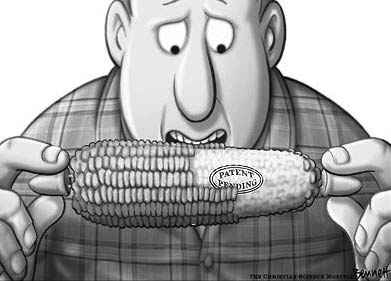
Scientists, as well as common sense, warn us that a public health Doomsday Clock is ticking. Within a decade, diet and environment-related diseases, including obesity, diabetes, heart disease, and cancer-heavily subsidized under our Big Pharma/chemical/genetically engineered/factory farm system-will likely bankrupt Medicare and the entire U.S. health care system.
Likewise, climate chaos and oil shortages, unless we act quickly, will soon severely disrupt industrial agriculture and long-distance food transportation, leading to massive crop failures, food shortages, famine, war, and pestilence. Even more alarming, accelerating levels of greenhouse gases (especially from cars, coal, cattle, and related rainforest and wetlands destruction) will soon push global warming to a tipping point that will melt the polar icecaps and unleash a cataclysmic discharge of climate-destabilizing methane, fragilely sequestered in the frozen arctic tundra.
If we care about our children and the future generations, we obviously must reverse global warming, stabilize the climate, and prepare for petroleum shortages and vastly higher oil prices. The only way to do this is to reduce greenhouse gas pollution by 90% by 2050, by shifting away from petroleum and coal-based energy to radical energy conservation and making a transition to renewable solar and wind power-not only in transportation, housing, and industry, but in farming, food processing, and food distribution as well.
In the food sector, we cannot continue to hand over 88% of our consumer dollars to out-of-control, chemical-intensive, energy-intensive, greenhouse gas polluting corporations and “profit at any cost” retail chains such as Wal-Mart. The growth of the Organic Alternative is literally a matter of survival. The question then becomes how (and how quickly) can we move healthy, organic, and “natural” products from a 12% market share, to becoming the dominant force in American food and farming. This is a major undertaking, one that will require a major transformation in public consciousness and policy, but it is doable, and absolutely necessary.
But before we overthrow Monsanto, Wal-Mart, and Food Inc., we need to put our own house in order. Before we set our sights on making organic and “transition to organic” the norm, rather than the alternative, we need to take a closer, more critical look at the $50 billion annual natural food and products industry.
How natural is the so-called natural food in our local Whole Foods Market, coop, or grocery store? Is the “natural” sector moving our nation toward an organic future, or has it degenerated into a “green washed” marketing tool, disguising unhealthy and unsustainable food and farming practices as alternatives. Is “natural” just a marketing ploy to sell conventional-unhealthy, energy-intensive, and non-sustainable food and products at a premium price?
The myth of natural food, farming, and products
Walk down the aisles of any Whole Foods Market (WFM) or browse the wholesale catalogue of industry giant United Natural Foods (UNFI) and look closely. What do you see? Row after row of attractively displayed, but mostly non-organic “natural” (i.e. conventional) foods and products. By marketing sleight of hand, these conventional foods, vitamins, private label “365” items, and personal care products become “natural” or “almost organic” (and overpriced) in the Whole Foods setting.
The overwhelming majority of WFM products, even their best-selling private label, “365” house brand, are not organic, but rather the products of chemical-intensive and energy-intensive farm and food production factories. Test these so-called natural products in a lab and what will you find: pesticide residues, Genetically Modified Organisms, and a long list of problematic and/or carcinogenic synthetic chemicals and additives.
Trace these products back to the farm or factory and what will you find: climate destabilizing chemical fertilizers, pesticides, fungicides, herbicides, and sewage sludge-not to mention exploited farm workers and workers in the food processing industry. Of course there are many products in WFM (and in UNFI’s catalogue} that bear the label “USDA Organic.” But the overwhelming majority of their products, even their best selling private label, “365,” are not.
What does certified organic or “USDA Organic” mean? This means these products are certified 95-100% organic. Certified organic means the farmer or producer has undergone a regular inspection of its farm, facilities, ingredients, and practices by an independent Third Party certifier, accredited by the USDA National Organic Program (NOP).
The producer has followed strict NOP regulations and maintained detailed records. Synthetic pesticides, animal drugs, sewage sludge, GMOs, irradiation, and chemical fertilizers are prohibited. Farm animals, soil, and crops have been managed organically; food can only be processed with certain methods; only allowed ingredients can be used.
On the other hand, what does “natural” really mean, in terms of farming practices, ingredients, and its impact on the environment and climate? To put it bluntly, “natural,” in the overwhelming majority of cases is meaningless, even though most consumers do not fully understand this. Natural, in other words, means conventional, with a green veneer.
Natural products are routinely produced using pesticides, chemical fertilizer, hormones, genetic engineering, and sewage sludge. Natural or conventional products-whether produce, dairy, or canned or frozen goods are typically produced on large industrial farms or in processing plants that are highly polluting, chemical-intensive and energy-intensive.
“Natural,” “all-natural,” and “sustainable,” products in most cases are neither backed up by rules and regulations, nor a Third Party certifier. Natural and sustainable are typically label claims that are neither policed nor monitored. (For an evaluation of eco-labels see the Consumers Union website). The USDA’s Food Safety and Inspection Service provides loose, non-enforced guidelines for the use of the term “natural” on meat–basically the products cannot contain artificial flavors, coloring, or preservatives and cannot be more than minimally processed.
On non-meat products, the term natural is typically pure propaganda. Companies (like Whole Foods Market or UNFI) are simply telling us what we want to hear, so that we pay an organic or premium price for a conventional product. Perhaps this wouldn’t matter that much if we were living in normal times, with a relatively healthy population, environment, and climate. Conventional products sold as natural or “nearly organic” would be a simple matter of chicanery or consumer fraud. But we are not living in normal times.
Pressuring natural and conventional products and producers to make the transition to organic is a matter of life or death. And standing in the way of making this great transition are not only Fortune 500 food and beverage corporations, Monsanto, and corporate agribusiness, as we would expect, but the wholesale and retail giants in the organic and natural products sector, UNFI (United Natural Foods) and Whole Foods Market (WFM).
UNFI and Whole Foods: Profits at any cost
UNFI and Whole Foods Market are the acknowledged market and wholesale distribution leaders in the $70 billion organic and natural foods and products sector. Companies or brands that want to distribute their products on more than just a local or regional basis must deal with the near-monopoly wholesaler, UNFI, and giant retailer WFM. Meanwhile retailers in markets dominated by Whole Foods have little choice but to emulate the business practices of WFM — i.e. sell as many conventional foods, green washed as “natural,” as possible.
Unfortunately neither UNFI and Whole Foods are putting out the essential message to their millions of customers that expanding organics is literally a matter of life or death for public health, climate, and the environment. Neither is leading the charge to double or triple organic food and farming sales by exposing the myth of natural foods, giving preference to organic producers and products, and pressuring natural brands and companies to make the transition to organic. Neither are the industry giants lobbying the government to stop nickel and dime-ing organics and get serious about making a societal transition to organic food and farming.
The reason for this is simple: it is far easier and more profitable for UNFI and WFM to sell conventional or so-called natural foods at a premium price, than it is to pay a premium price for organics and educate consumers as to why “cheap” conventional/natural food is really more expensive than organic, given the astronomical hidden costs (health, pollution, climate destabilization) of conventional agriculture and food processing.
UNFI has cemented this “WFM/Conventional as Natural” paradigm by emulating conventional grocery store practices: giving WFM preferential prices over smaller stores and coops —many of whom are trying their best to sell as many certified organic and local organic products as possible. Compounding this undermining of organics is the increasing practice among large organic companies of dropping organic ingredients in favor of conventional ingredients, while maintaining their preferential shelf space in WFM or UNFI-supplied stores.
In other words the most ethical and organic (often smaller) grocers and producers are being discriminated against. WFM also demands, and in most cases receives, a large quantity of free products from producers in exchange for being distributed in WFM markets.
The unfortunate consequence of all this is that it’s very difficult for an independently-owned grocer or a coop trying to sell mostly organic products to compete with, or even survive in the same market as WFM, given the natural products “Sweetheart Deal” between UNFI and WFM.
As a consequence more and more independently owned “natural” grocery stores and coops are emulating the WFM model, while a number of brand name, formerly organic, companies are moving away from organic ingredients (Silk soy milk, Horizon, Hain, and Peace Cereal for example) or organic practices (the infamous intensive confinement dairy feedlots of Horizon and Aurora) altogether, while maintaining a misleading green profile in the UNFI/WFM marketplace.
Other companies, in the multi-billion dollar body care sector for example, are simply labeling their conventional/natural products as “organic” or trade-marking the word “organic” or “organics” as part of their brand name.
The bottom line is that we must put our money and our principles where our values lie. Buy Certified Organic, not so-called natural products, today and everyday. And tell your retail grocer or coop how you feel. Please join thousands of other Organic Consumers and send a message to Whole Foods and UNFI today.
[Ronnie Cummins is National Director of the Organic Consumers Association.]
Source / CommonDreams

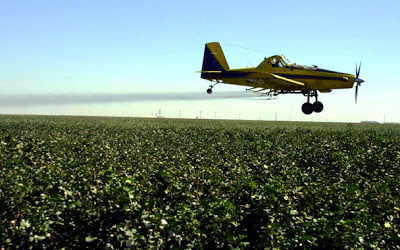

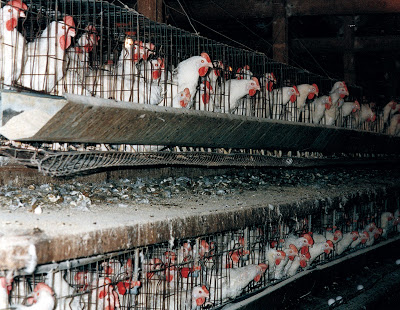
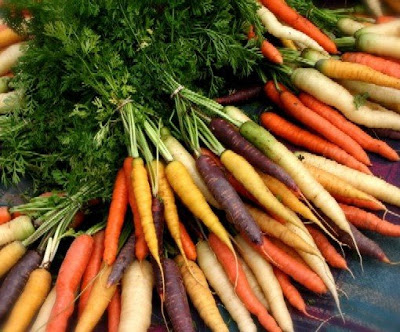

















I am so stinkin’ glad someone is TALKING about this!! “Natural” IS a total farce, & it boils my blood to think how many consumers are duped into believing differently.
In addition to writing WFM & UNFI to read them the riot act, I also suggest writing your smaller grocer/coop (& remember that Central Market here in Austin has a store-brand, too–CM Organics, USDA certified [although what that actually means needs to be the subject of another post entirely] organic) to praise their choice to stick to strict organic standards. We’ve got to remember how important it is to not only point out when a company is doing something wrong, but applaud the ones who are doing right as well.
The purpose of a company is to provide a product that is profitable; NOT healthy. You must make the decision to chose which product to buy and NOT rely on a group of corporate VP’s to decide for you. Purchase your produce and consumables local farmers and leave the rest of the population alone to make their own choices. we can educate people but we can’t force them to choose. we’re NOT nazis!
The word “natural” is also misunderstood by consumers of dietary supplements. Herbs, vitamins, minerals, and many other substances are used in DSs. Consumers seem to persistently believe that if something is “natural”, it can’t hurt them to use it! This is logically nonsensical.
If you don’t think an herbal medicine can cause any harm, why in the world would you think it might do some good? Either it’s biologically active or it isn’t; if it is; there is almost always the potential for benefit OR harm, or the risk of side effects even in achieving an overall benefit.
“Natural” means no more in foods and dietary supplements than it does in cosmetics (!) or shoes or posture or any other noun to which it may be applied; a vaguely descriptive adjective indicating laxity or casualness. “In the public schools of America, children receive a NATURAL education.”
Mariann,
I agree with what you say but will add a few comments.
Natural, means it exists in nature i.e the molecule already existed in flora or fauna.
Traditional medicine means a natural product that was found by experience over a 1000 yrs or so to work with minimal harm.
In modern pharmacy & in the flavors and fragrance industry many synthetic chemicals some similar to naturals and some off the wall are used.
Pretty stringent testing and
only a few bad effects so far.(Example thalidomide)
With genetic modifications some foods can be grown to have “natural phytochemicals” (Plant chemicals) that are not usually found in the species (ie fish metabolites in corn)
Its hard to judge about this thing, I guess move with care.
How funny in the 60’s we talked about “chemicals” and “herbals”,usually pompous (and you know )about the whole deal.
smp
Mariann–Thanks for voicing my pet peeve about “natural” products.
Anonymous(1) says something absolutely true: “The purpose of a company is to provide a product that is profitable; NOT healthy.” That is why we have to get rid of the profit system. Yeah, that’s right: SMASH CAPITALISM!
Prior to working with land, I work in the legal world as a researcher for a high quality law firm. I discovered some interesting things about certified land in the US for production of herbs and botanicals. The certified land for this type of production had gone down 95% in the course of 5 years, while product demand had skyrocketed. . In the course of 4 years, I could find no certified land record for witch hazel production – it is a species native to the United States, exclusively. It is the most used botanical in the world, bar none.
Recently, I found several large sellers offering certified organic witch Hazel with Poland as the country of origin. I called the Vice President of one company and he told me there were huge witch hazel plantations in Poland. Having been involved with wild land use, farming and conservation for many years, it was easy to find someone with knowledge of Poland’s agricultural production from a University. I was was told by the University that Hamamelis virginiana is grown only as an oriental in landscaping, and there was NO production of this species in Poland. They did produce Hazel nuts but that species has is not related.
We did 4 years of hard work, to move, set up a small processing facility, get a lease on lands, buy equipment, make equipment, by pack animals, hired a restoration ecologist etc. I have talked to IFOAM, I have talked to UK Soil and many others. I have talked to certifiers, I have posted to lists, I am blogging and so on. The certifiers have a vested interest in protecting their clients and the integrity of their brand. We are very legitimate work very hard and carefully with the botanicals, but cannot compete with “big names” who belong to every “sustainability” group and put on a good image, without any integrity. In fact, I called back and let the on line dealer know, as a courtesy what I found. They did not bother to return the call. Were it not, for people like those working on this blog, we might just give up as it is overwhelming to be a producer, working in correct procedure. We cannot produce our organic products in a way that is profitable when there are those who cheat on a huge level. Thank you for your work